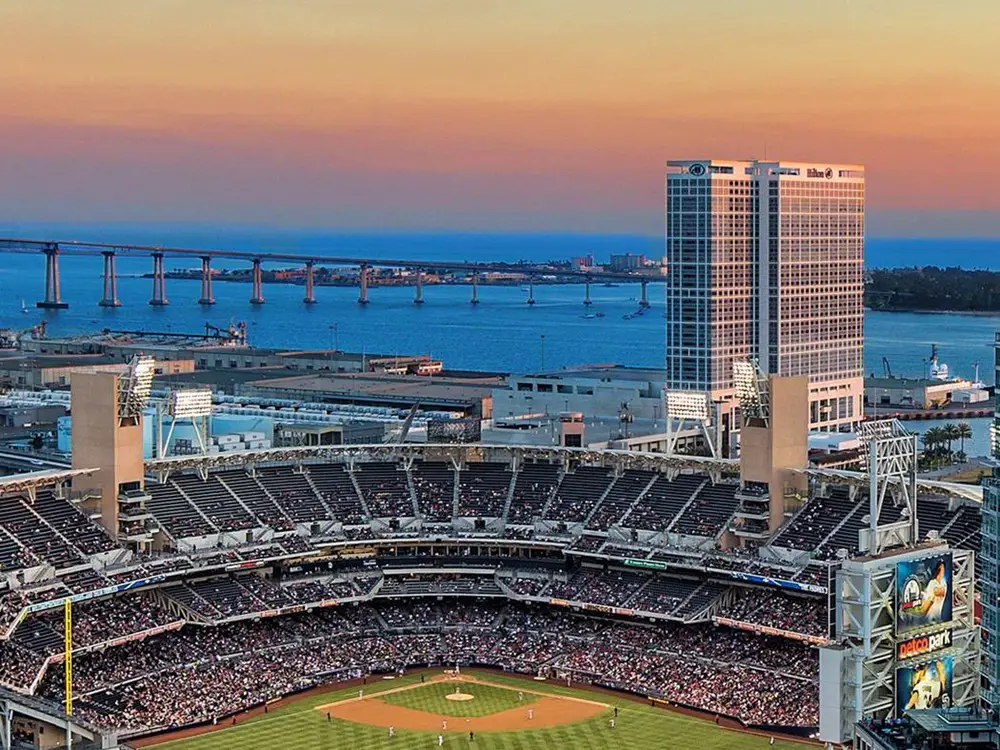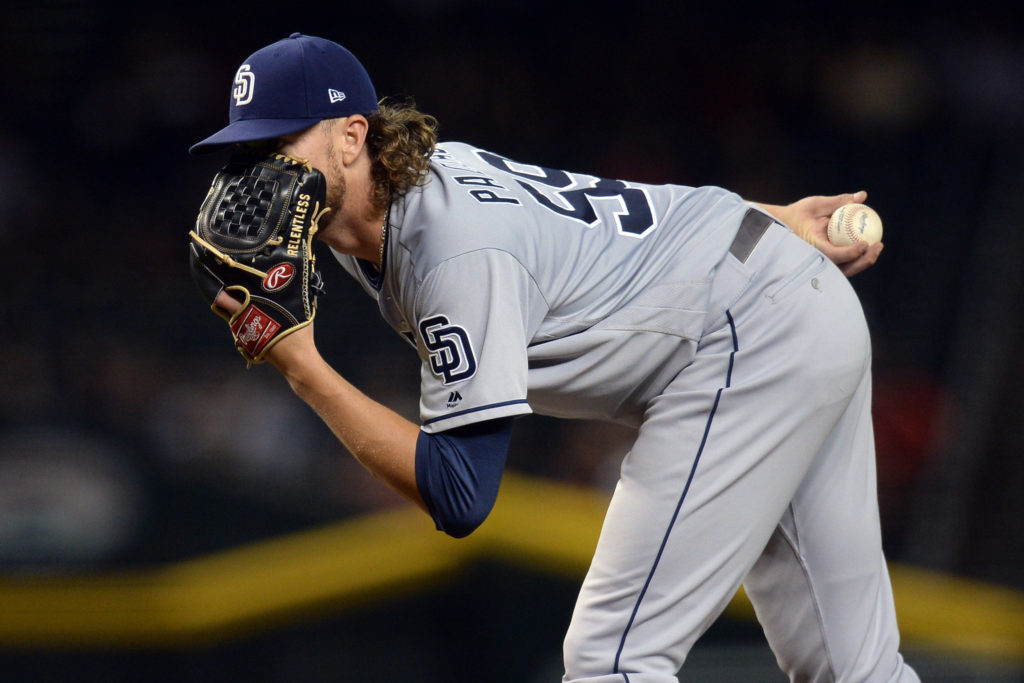Updates on how the coronavirus is affecting baseball

Credit: SD Tourism

A look at how the coronavirus has affected the San Diego Padres and all other Major League Baseball teams.
The absence of Major League Baseball has been a painful endeavor. Whereas any other year we would be entering the second week of Padres’ baseball, fans have had to stare at blank screens, yearning for the summer sport, which is the country’s favorite pastime. The culprit behind the yearning is an enemy that bears no face yet makes world leaders consider the situation similar to war.
As President Trump and the rest of the government tries to assess how the coronavirus (COVID-19) affects our daily lives, baseball has followed suit, attempting to limit the risk this virus poses to players and fans alike. However, much of the news that we watch today covers, and does so rightly, only the social and economic ramifications of this disaster, with the President readjusting his Easter plans and telling us to do the same for safety reasons. Yet, millions of baseball fans are left wondering how the pandemic is affecting baseball; for example, when the season will start is a question that many in the industry are trying to figure out. And, unless you are an avid fan or one that searches through multiple sources to get answers, the questions remain unresolved.
The purpose of this piece is to organize all of the recent information describing the impacts of the coronavirus on our summer love into one article. Hopefully, this will help any casual fan, or any that are tired of rummaging through numerous other pieces for answers, understand how baseball will proceed.
When will the season start?
The first and most important question that needs to be answered is when the season will start. While there have been numerous different attempts at solving this problem, especially with President Trump delaying the return to normal life, including the reopening of the economy, from Easter, April 12, to the end of the month, on March 12, news broke that Opening Day would be delayed by two weeks. As fans, we hoped that there was some truth to this statement.
However, as with many viruses, the timetable for when life can pick up again is mysterious. Not too long after the update, fans throughout the nation were asked to bear down even longer as Opening Day was once again delayed. The date for which MLB hoped to set Opening Day was now mid-May, a time coinciding harmoniously with the government’s restriction on events with more than 50 people for the following eight weeks. A postponement such as this inevitably made many executives question whether there would be a subsequent spring training for sure players of all positions would need added time to ramp back up once more, mainly because players were sent home from their respective spring training homes. For instance, San Diego Padres’ players, after practicing for a few days more in Arizona after news broke, were asked to travel to America’s Finest City for practice sessions in small groups.
As of now, authorities within the game hope to start Opening Day on July 1, an incredible day considering its closeness to the Fourth of July. Now, instead of merely celebrating the country’s independence, fans will revel in one of the nation’s proudest traditions, baseball. However, with the unpredictable nature of COVID-19, the season may be further delayed. Although we hope that this will not be the case, the heart-wrenching fact is that the virus may cause the season to begin later than July.
Will the players resume spring training, or will they dive right into games?
When the season was first pushed back, the answer to whether spring training will resume was clear. Since, optimistically, there would only be a two-week delay to Opening Day, there seemed to be no immediate need for another form of spring training. Some executives still believed that players could play in meaningful games as soon as possible. However, with the delays came the realization that there would be an extended leave where a whole team could not practice together and find the chemistry to succeed once the season started.
The belief now is that spring training is an unavoidable adjustment period in which major league and minor league players must participate. Yet, there are some bright lights to be found in this dim recognition. It can be found in the widespread belief that spring training will only have to be two weeks, a result which would not affect the July 1 Opening Day date if current considerations allow, and may take course in front of empty stadiums, thus allowing meaningless games to start earlier. In short, spring training will happen because players, after having a couple of months off, will need time to get prepared for the upcoming season. They will not be able to dive into games that count immediately.
How many games will there be?
This question is the most daunting. Fans fear that the season will be restricted to less than four months of play, a time frame which is equivalent to around 107 ball games. Yet, there is a very real possibility where this eventuality happens. Major League Baseball, on their part, have been trying to assemble a season which nears the 162-game regular season, although that precise number is likely impossible to occur.
The hope is that the season can be close to the usual number. What this would mean is that teams may have to play as many as two doubleheaders per week in addition to skipping off-days. Moreover, the season may very well be extended into October and possibly the beginning of November. These changes will allow teams to play as close to 162 games as possible, with 140-145 contests being a likely scenario if the season starts on July 1 and all the changes above are made.
How will teams handle the extra workload?
Major League Baseball has clearly outlined how it wants to have nearly the same amount of games for each team as a regular-season would entail. To do this, multiple doubleheaders may have to be played each week, and off-days, especially the All-Star break, which usually rejuvenates players for the second half, will have to be cut. As a result, athletes will most likely be prone to more injuries and exhaustion. Thus, to accommodate the heavy workload which MLB is proposing and many players are protesting for, the 26-man roster has to be enlarged.
A 29-man or 30-man active roster is probable in this case as it enables players to get some rest even though it would not be equal to the amount they usually receive. To many fans, this proposal is extremely exciting for numerous reasons. One, winning teams will have to be deep, thereby ensuring that the entirety of a roster has to be comprised of excellent players. This bars clubs who have one or two superstars from getting ahead. Two, the increase in roster capacity will allow less recognized players to get a chance at regular playing, possibly become breakout stars in the process. Such a process will create more underdog stories this season. Three, top prospects near the big leagues will get a chance to play earlier in a team’s season.
Finally, such a move will benefit the San Diego Padres. The team is deep, especially since the farm system, including Triple-A, is. The outfield would, in this scenario, host Tommy Pham, Trent Grisham, Wil Myers, Franchy Cordero, Josh Naylor, and maybe Edward Olivares, a prospect who is hard to root against and one who had an eye-opening spring training where he showcased all five tools. For the infield, we would be able to accommodate Jake Cronenworth, Greg Garcia, and Brian Dozier. Since our catching unit has several unresolved issues, particularly Austin Hedges‘ atrocious hitting and Francisco Mejia‘s sub-par fielding, the team could give opportunities to Luis Torrens, a young catcher who might surprise people based on his 2019 minor league success behind the dish and at the plate.
The bullpen could also utilize more of the excellent arms that we have stockpiled in the minors, such as Steven Wilson, or ones we signed to major league contracts, like Pierce Johnson. Being careful, the team should continue with their plans of giving Michel Baez and Adrian Morejon a full starter’s workload in Triple-A with the hope that they can reach their lofty goals of being, at the least, number #3 starters. Lastly, Cal Quantrill and Joey Lucchesi could benefit by being included in the starting rotation as a means of giving starting pitchers the five-day rest periods they need. Either way, expect plenty of fluidity as there should be a lot of player movement between the minor and the major leagues in an attempt to stave off physical and mental exhaustion.
PAGE 2 LINK BELOW
I write, I write, and then I write some more.. Lifelong Padres & Chargers fan who is tired of the acceptance of losing that grips all of San Diego sports fans!